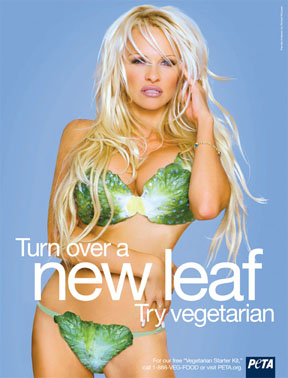A Visual Analysis of PETA's Advertising
 |
 |  |  |  |  |
 |
 |  |  |  |  |
In my discussion of discourse analysis, I am referring to discourse analysis I one as categorized by Gillian Rose (146-148). The idea of discourse analysis I is heavily based on the concept of intertextuality which is how a set of discursive texts depend on meaning found in other related texts (Rose 142). Because the meanings and discursive effects of PETA's ad campaigns are so based in intertexuality with other ads, this site presents multiple images for each of the three campaigns even though I'm only able to analyze a few in depth. Then within each campaign I present images of how the campaigns are brought into the physical space to further the message while still referencing and interacting with the printed advertisements.
Much of the meaning of the ads is based in a sexual discourse that
lends itself well to psychoanalysis. The study of psychoanalysis draws
heavily from Sigmund Freud's theories of sexuality and the
unconscious. A foundation of psychoanalysis is the concept of
scopophilia, which is "pleasure in looking," something Freud described
as one of the basic human drives (Rose 107). PETA ads are based on the
pretense that people like looking at bodies, a common advertising tool
of employing sexuality. Well we can make the obvious generalization
that PETA ads use sexuality and nudity to sell their message, or
"public service announcement," I will use psychoanalysis with
discourse analysis to illustrate the ideologies of gender, race, and
heterosexuality that the ads reinforce and advantage.
Works Cited
Rose, Gillian. Visual Methodologies: An Introduction to the Interpretation of Visual Materials. 2nd ed. London: SAGE Publications, 2007. Print.
| [Opening Page] | [Next] |